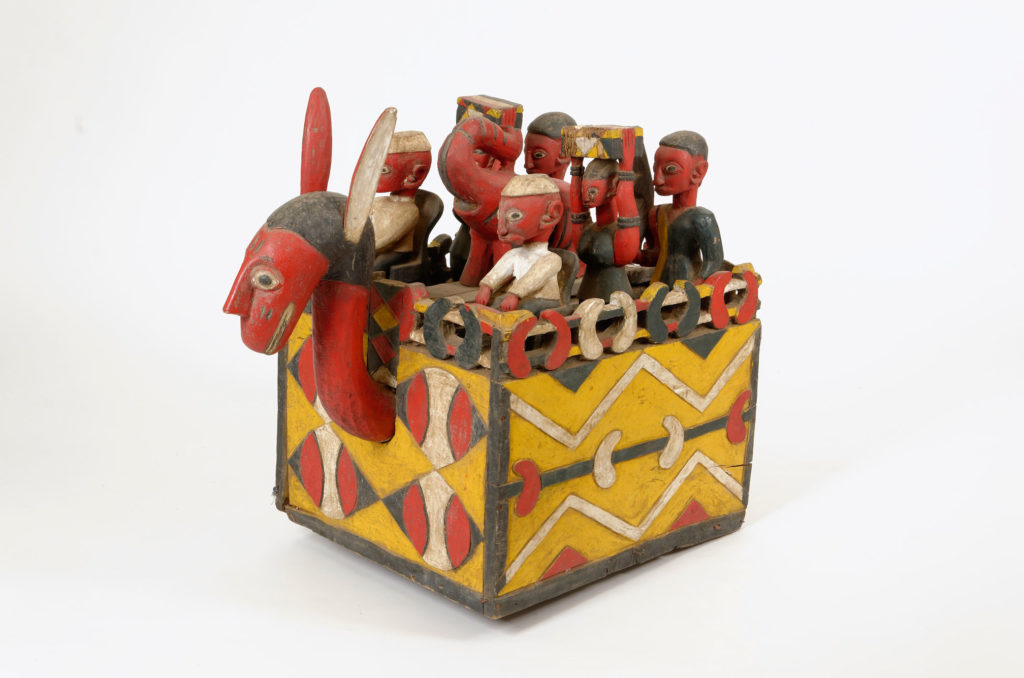Athens, Ga. – The Georgia Museum of Art at the University of Georgia will present the exhibition “From Savanna to Savannah: African Art from the Collection of Don Kole” from Jan. 19 to April 14. Featuring more than 40 works of three-dimensional traditional art from the early to mid-20th century, the exhibition includes sacred, meaningful objects created by numerous peoples in sub-Saharan Africa. Works of art in various media-wood, bronze, terracotta, sandstone and cloth-from regions as diverse as Cameroon, Guinea, Tanzania and the Democratic Republic of Congo present examples from the visual and material culture of Africa that demonstrate cultural concepts and religious beliefs.
Chief curator and curator of American art Paul Manoguerra organized the exhibition from the collection of Don Kole, a Savannah-based real estate investor, with the assistance of William Darrell Moseley, a Tennessee-based expert in African art. Kole and his wife, Kaye, have long been passionate about African art and have made numerous trips to the continent to build their collection and educate themselves about traditional arts.
Manoguerra said, “These objects on display from the Kole Collection present the passion and enthusiasm of a Georgia collector for African art. The Georgia Museum of Art is proud to show these works of art from the Kole Collection and to display this sampling of the aesthetics of African art.”
Objects on view will include furniture, masks, fertility dolls, pottery, weaponry, musical instruments and clothing, many of which bear elaborate decoration in the form of carving, paint or beading. The influence of African art on modern art is well documented, but Manoguerra said he believes these works can stand on their own aesthetically without being tied to the Western art historical canon.
This exhibition is part of an ongoing initiative by the museum to deal with African and African-American themes, sparked in part by Larry and Brenda Thompson’s gift in early 2012 of a large collection of works by African-American artists. Much of that gift is currently on tour in the exhibition “Tradition Redefined: The Larry and Brenda Thompson Collection of African-American Art,” which will open at the Knoxville Museum of Art in April 2013. GMOA has a history of displaying African art that dates as far back as the 1970s, although it has been some time since its last exhibition on the subject.
Events connected with the exhibition include a lunch and learn for UGA faculty and staff on African art and the African diaspora Feb. 1 at 12:30 p.m. (lunch is provided; call 706/583-0111 or email cdicindi@uga.edu to reserve a space), a Family Day Feb. 16 from 10 a.m. to noon focused on mask-making (organized with the help of UGA’s African Studies Institute in celebration of its 25th anniversary) and the museum’s annual Black History Month Dinner Feb. 21 at 6 p.m. The museum’s quarterly open house, 90 Carlton: Winter, will be held Feb. 7 at 6 p.m. and will celebrate this exhibition as well as others.
Museum Information
Partial support for the exhibitions and programs at the Georgia Museum of Art is provided by the Georgia Council for the Arts through appropriations of the Georgia General Assembly. The council is a partner agency of the National Endowment for the Arts. Individuals, foundations and corporations provide additional museum support through their gifts to the University of Georgia Foundation. The Georgia Museum of Art is located in the Performing and Visual Arts Complex on the East Campus of the University of Georgia. The address is 90 Carlton Street, University of Georgia, Athens, Ga. 30602-6719. For more information, including hours, see http://www.georgiamuseum.org or call 706/542-GMOA (4662).
##
Note to editors: Exhibit images are available for download at the following urls.
Shoulder-mask-h.jpg
Baga (Guinea)
Shoulder mask for ceremonial dancers at tribal fairs, ca. 1935-65
Painted wood
27 x 18 x 32 inches
Collection of Don Kole
Yoruba-vest-small-v.jpg
Yoruba (Nigeria)
Beaded prestige vest, ca. 1935-65
Cloth, beads, and shells
45 x 30 x 2 inches
Collection of Don Kole
